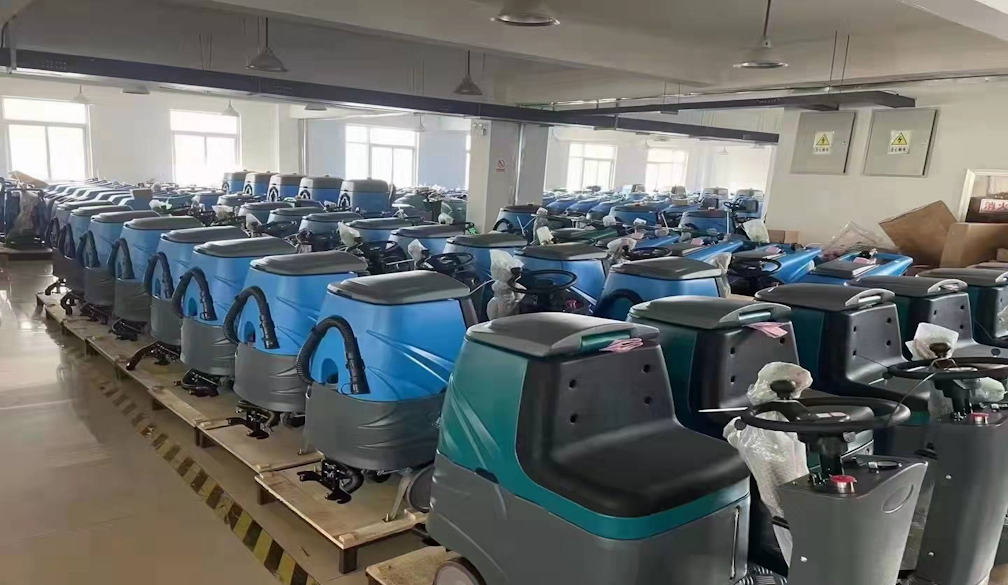Ride-On Sweepers for Warehouse Automation: Efficiency at its Best
- Written by The Post

In the supply chain, warehouses are an essential hub for the storage, organization, and distribution of commodities. The effectiveness of warehouse operations directly affects a company's overall success. Ride-on sweepers are one of the essential elements of the recent revolution in the warehouse industry brought about by the advent of automation. The efficiency, cost-effectiveness, and sustainability of these specialized devices can greatly improve warehouse operations. This essay will examine the ride-on sweeper industry and how it is influencing warehouse automation.
The Evolution of Warehouse Automation
The laborious, labor-intensive processes used to operate warehouses in the past are a thing of the past. The introduction of automation technology has been prompted by the need for quicker order fulfillment and greater efficiency. These technologies include sophisticated inventory management software, robotic picking devices, and automated conveyor systems.
Although these developments have unquestionably increased warehouse productivity, there is always potential for improvement. Here, ride-on sweepers come into play, providing a special set of advantages that enhance current automated systems.
2. The Role of Ride-On Sweepers
Cleaning and Maintenance
For efficient operations, a warehouse must be kept tidy and maintained. In addition to posing safety risks, dust, litter, and clutter can make automated machines less effective. Traditional manual cleaning techniques take more time and are less effective.
Ride-on sweepers are made to handle this problem successfully. These robots can swiftly and thoroughly clean big warehouse spaces thanks to their strong brushes and suction systems. Ride-on sweepers automate the cleaning process, freeing up workers for other important jobs like order picking and quality control.
Efficiency and Productivity
The ability of ride-on sweepers to quickly cover large areas is one of its main advantages. These robots can easily move through confined spaces and around obstacles since they are built to be agile and versatile. As a result of their improved productivity due to their speed and agility, they can cover more distance in less time.
Additionally, ride-on sweepers may run continuously for lengthy periods of time, minimizing downtime for maintenance or charging. The efficiency and productivity of the warehouse are further increased by this uninterrupted operation.
Sustainability Benefits
Sustainability is a crucial factor for organizations in today's society, regardless of the industry. Ride-on sweepers provide a number of sustainability advantages that address these environmental issues.
Reduced Energy Consumption
Ride-on sweepers are more energy-efficient than conventional industrial cleaning techniques, which can require the use of considerable amounts of water and energy. They are a more environmentally friendly option for warehouse cleaning because they are made to maximize energy consumption.
Dust Control
Dust in a warehouse can damage products and equipment and pose a serious health risk to workers. Advanced filtration systems on ride-on sweepers efficiently capture and contain dust. This lowers the possibility of damaging delicate merchandise in addition to making the workplace cleaner and healthier.
Longer Equipment Lifespan
Wear and tear might result from automated machinery operating continuously in a dusty atmosphere. Ride-on sweepers assist in extending the life of other equipment by keeping the warehouse clean, which lowers the frequency of replacements and repairs.
4. Integration with Warehouse Management Systems
Ride-on sweepers can be linked with warehouse management systems (WMS) to leverage their advantages. Cleaning jobs can now be scheduled and coordinated more precisely thanks to this connection. WMS can offer information on traffic patterns, busiest times, and areas that need to be cleaned more frequently, allowing ride-on sweepers to work as efficiently as possible.
5. Return on Investment (ROI)
For warehouse owners, buying ride-on sweepers is a wise strategic move. Although purchasing these devices has an initial expense, the long-term return on investment is significant. The following elements affect the ROI of ride-on sweepers:
Labor Savings
Ride-on sweepers lessen the need for manual work by automating the cleaning process, keeping warehouses clean. This reduces labor expenses and frees up human workers to work on tasks of greater value.
Increased Efficiency
Ride-on sweepers' increased efficiency leads to quicker turnaround times and improved warehouse operations in general. Increased order fulfillment rates and customer satisfaction may result from this.
Reduced Maintenance Costs
Long-term maintenance and repair expenses can be reduced since cleaner warehouses result in less wear and tear on other facilities and equipment.
Sustainability Savings
Utilizing ride-on sweepers has a positive impact on the environment and can result in cost savings by using less water and energy.
Safety Considerations
Each and every warehouse operation must prioritize safety. It's important to take safety precautions into account when incorporating ride-on sweepers into the operation. Here are some crucial things to remember:
Operator Training
For those operating ride-on sweepers, proper training is essential. They must be acquainted with the controls, security features, and emergency protocols of the apparatus.
Traffic Management
To avoid collisions with other pieces of machinery and people inside the warehouse while ride-on sweepers move about, clear traffic routes and zones must be established.
Sensor Technology
Many contemporary ride-on sweepers come with cutting-edge sensor technology, which allows them to recognize obstructions and slow down or stop in order to avoid collisions. The addition of these safety features can improve warehouse security even more.
Future Trends in Warehouse Automation
One facet of the broader trend of warehouse automation is the usage of ride-on sweepers. Looking ahead, a number of trends are probably going to influence how warehouse automation develops:
Artificial Intelligence (AI) Integration
AI is positioned to have a bigger impact on warehouse operations. For ride-on sweepers, AI-powered algorithms can improve routing and scheduling, increasing their efficiency.
Robotics and Automation
Beyond order picking, robotics usage in warehouses is anticipated to grow. In order to keep warehouses pristine, we might see more autonomous cleaning robots that collaborate with ride-on sweepers.
Sustainability Initiatives
As environmental concerns persist, warehouse owners may give sustainability a higher priority in their automation plans. This might encourage the creation of further greener cleaning methods.
Conclusion
In the array of instruments available for warehouse automation, ride-on sweepers have proven to be a useful addition. They make a good investment for warehouse operators since they can effectively clean big rooms, cut labor expenses, and support sustainability goals. Ride-on sweepers can improve effectiveness, productivity, and safety in the modern warehouse when they are incorporated into a well-thought-out automation strategy.
Ride-on sweepers are positioned to play a significant part in determining how the warehouses of the future will look as the warehousing sector continues to develop. The potential for innovation in warehouse automation is still enormous given recent technological developments and an increasing attention to sustainability. Ride-on sweepers are only one part of the solution, but they are a big step in the right direction toward optimizing efficiency in warehouse operations.










